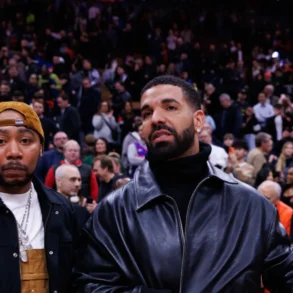Image via Karl Ferguson Jr
Jeff Weiss says it’s regular but it’s not normal.
In the summer of ’74, a new world bloomed from skeletal ruins and smoldering debris. This parallel universe expanded out of an incandescent string of innovations in the rec rooms and gymnasiums of the South Bronx. Psychedelic manipulations of wax, fluorescent subway car bombings, and 360-degree power moves on the blacktop. At first, it lacked a name. This was just the wild style spawned from dispossessed kids uptown, wholly unaware that they had accidentally invented the future.
The break offered the first foundational rupture, isolating drum beats in infinite space. Kool Herc, Love Bug Starski, Grandmaster Flash, and Grand Wizzard Theodore created the heavens and earth in a furnace of disco, funk, and nickel-plated soul. Whole genres sliced up by scientifically-precise samurai. A three-dimensional realm reinvented from familiar shapes.
Rapping was the final evolutionary adaptation. The Jamaican tradition of toasting and the griot prophecies of The Last Poets led to Coke La Rock, the first real master of ceremonies, who controlled the microphone at park jams and block parties. Syncopated improvisations rocking on and on until the break of dawn.
A skinny adolescent living in an apartment on Creston Avenue heard hip-hop before he ever experienced it. From boomboxes and gypsy cabs, cassette dubs blared loud enough to overwhelm the traffic and sirens outside his South Bronx window. The world later knew him as the pioneer, the Cold Crush Brother, Grandmaster Caz. But the adopted son of a single mother was originally christened Curtis Brown. Transfixed by the radio, he listened while Frankie Crocker and the WABC DJs spun everything from the Jacksons to the Osmonds, Al Green to Barry Manilow – at least until Herc came in and turned everything loose.
Acquiring a turntable, Curtis Brown renamed himself Casanova Fly. To get booked in the adult clubs, the kid played mostly disco and slow jams. The former taught him how to blend. Break beats taught him how to cut. He deejayed, tagged, and breakdanced, but eventually gravitated towards rapping. By his 18th birthday, Brown was already a nascent force in the South Bronx. A forerunner of the folkloric heroes who emerged from every hood a few generations later. The slick charmer with matinee idol charisma and the rollicking cadences of a master storyteller. He sported a flashy wardrobe and a vocal register as smooth as an Oldsmobile 98.
But as the ‘70s drew to a close, Caz and his group, The Mighty Force 5, were still mired on the small-time party circuit. Their chief competitors, Grandmaster Flash and the Furious Five, procured professional representation who booked them all over the city. So one night at the Sparkle, Caz asked the nightclub’s doorman Hank Jackson if he’d consider managing the group. The ex-wrestling champ quickly agreed, even borrowing $2,000 from his parents to bolster the Force Five’s sound system. To pay his family back, Jackson got a job making pizzas at the Crispy Crust pizza in Englewood, New Jersey. To pass the time, he rapped along to Force 5 tapes.
What happened next is the most fabled betrayal in Hip-Hop’s old testament. After all, Eden may be a myth, but original sin is real. It’s better to hear the story from Caz below, but the abridged version is that Joey Robinson, son of Sugar Hill co-founder, Sylvia Robinson, had heard Jackson rhyming along to Caz’s lyrics at the pizza parlor. Seeking to cash in on the trend sweeping the city, the fledgling label auditioned the portly pie flipper, who declined to tell his future label that none of the lyrics actually belonged to him. He wasn’t even a rapper.
None of it mattered to the Robinson Family, who already had a reputation for financial chicanery. Rebranding himself Big Bank Hank, the former manager-bouncer went into the studio and swiped Caz’s old lyrics so brazenly that he starts “Rapper’s Delight” by spitting “Check it out, I’m the C-A-S-AN, the N-O-V-A, and the rest is F-L-Y.” In his second verse, he even alludes to the “Casanova myth.” Yet Caz never received a dime or official credit for writing one-third of rap’s first smash single.
Nonetheless, the original Italian lothario had nothing on Casanova Fly, who soon joined the Cold Crush Brothers and became Grandmaster Caz. As the Carter years came to an end, Cold Crush became the most formidable crew in New York. Everyone knew them at the Disco Fever, the Ecstasy Disco, and the T Connection in the Boogie Down. Live recordings of their performances rang out of every self-respecting OJ cab.
The most canonized old school performance belongs to Caz, Almighty Kay Gee, J.D.L.,and DJ Charlie Chase. On the 4th of July weekend, 1981, the Cold Crush battled the Fantastic Romantic Five at Harlem World for a $1,000 grand prize. With their reputations on the line, the groups swapped meticulously rehearsed routines, hyper-melodic post-disco harmonies, and move-the-crowd freestyles. If the Fantastic 5 technically won the competition, the Cold Crush won the war. The tape became a grail, memorized by teenagers across the five boroughs, and establishing how far the genre had evolved past the elementary styles of “Rapper’s Delight.”
At moments on the Harlem World tape, Caz delivers futuristic complex internal rhymes and polysyllabic fast raps that wouldn’t have seemed out of place in ’88. You can hear the rapid-fire gatling gun funk in Big Daddy Kane and Kool G Rap, who repeatedly cited the formative influence of Caz and the Cold Crush. The Wu-Tang Clan’s GZA never shied away from praising the Cold Crush and the tapes made at Harlem World. Jurassic 5 live shows consisted largely of modernized Cold Crush routines. While no less than the God MC, Rakim claimed that Caz “definitely put him on the track.”
The seismic reverberations of the Harlem World rumble led Charlie Ahearn to recreate it in 1982’s Wild Style. This first cinematic depiction of hip-hop and the subsequent tour of Japan introduced the world to the four elements – which alone would have ensured Caz’s place in the pantheon. But his contributions to the soundtrack rank among the greatest moments of the first years of recorded hip-hop. In particular, the “South Bronx Subway Rap” might be the first major example of inspirational rap – where Caz chronicles the same “living hell” that Melle Mel did on “The Message,” but refuses fatalism. Offering transcendence through self-empowerment and creativity, Caz conveys positivity and hope.
Of course, this is America and inequitable economic realities prevailed. None of the first generation of rappers and DJs received remotely fair remuneration. As Jay-Z famously said, “I’m overcharging motherfuckers for what they did to the Cold Crush.” There were a few singles released on Tuff City, including “Punk Rock Rap,” which beat Run-DMC to the rock-rap fusion game by several years (an inspiration that DMC openly acknowledged). In 1992, Caz recorded a clutch of songs with Ced-Gee, the producer from Ultramagnetic, but Tuff City’s Aaron Fuchs reportedly felt they “weren’t commercial enough” (this unofficial anthology compiled by Unkut offers a taste of what Caz’s lone solo album, The Grandest of Them All, could have been).
In some sense, it’s a minor miracle that Caz is still here. During our conversation, he admits that he takes the most pride in his sheer perseverance. He weathered a decade of a drug dependency and many lean financial years. At one point, he supported himself doing hip-hop tours of the Bronx. According to reports, one of these excursions inspired Baz Luhrmann to create The Get Down for Netflix. No, Caz didn’t get paid for that either.
It’s the oldest story in music. The innovators get abandoned and the imitators reap the financial windfall. But in the last decade, Caz has experienced a substantial reversal of fortune. In 2015, he appeared on Macklemore’s platinum-single “Downtown,” which performed massively overseas and won the “Top Video” award at the MTV Europe Music Awards. He’s been working closely with the Hip-Hop Museum in the South Bronx and hosts a daily radio show with Sha-Rock of the Funky Four + 1 on SiriusXM’s Rock the Bells station. And after finally getting some long-standing passport issues resolved, Caz is heading overseas for the first time in over 30 years to perform with the Cold Crush Brothers.
But the most substantial recognition might arrive this weekend in Las Vegas. At the Aria Resort on Saturday night, Caz will be honored with a Grandmasters Award from the Paid in Full Foundation, which bestows him with a $100,000-a-year stipend for each of the next five years. Co-founded by Ben and Felicia Horowitz, the philanthropic organization includes Nas and Fab 5 Freddy on its advisory board and aims to “celebrate transformational hip-hop artists who have not received economic rewards proportional to their exceptional contributions to art and culture.”
For someone like Caz – who still lives in the public housing tenements of Soundview– this salary offers a long overdue reward for helping to create an art form and economic engine that has uplifted innumerable lives. It’s a slightly surreal experience to speak with him, even over Zoom. At 64, he looks at least a decade younger. This is someone who was not just there for the big bang, but who helped separate the light from the darkness. It’s as close as you can get to talking to WC Handy about the birth of the blues or Jelly Roll Morton about what it was like to play in the red light ragtime haunts of New Orleans. But this prelude has gone on long enough. Caz doesn’t really need an introduction; he is the introduction.
This post was originally published on this site be sure to check out more of their content.







